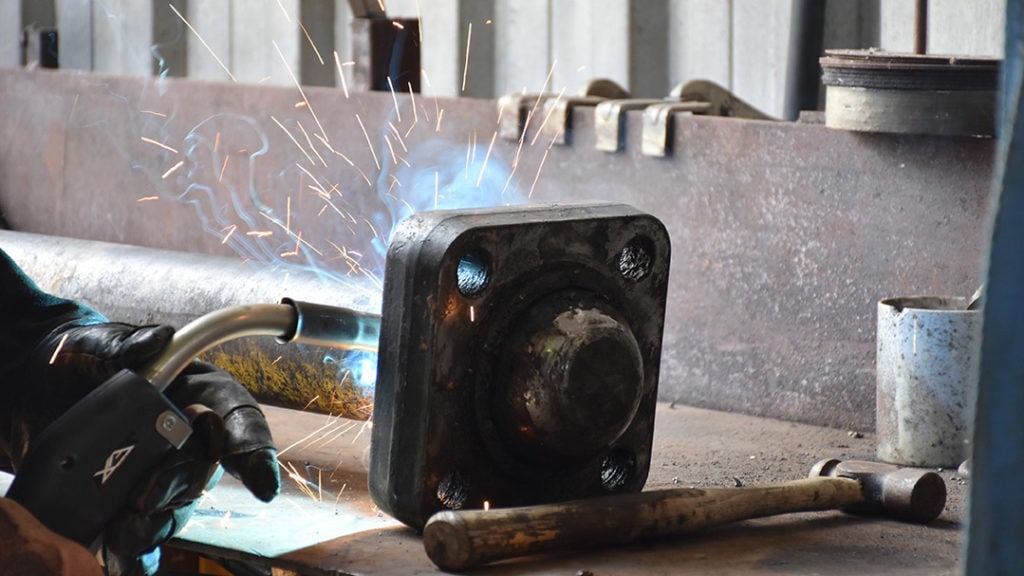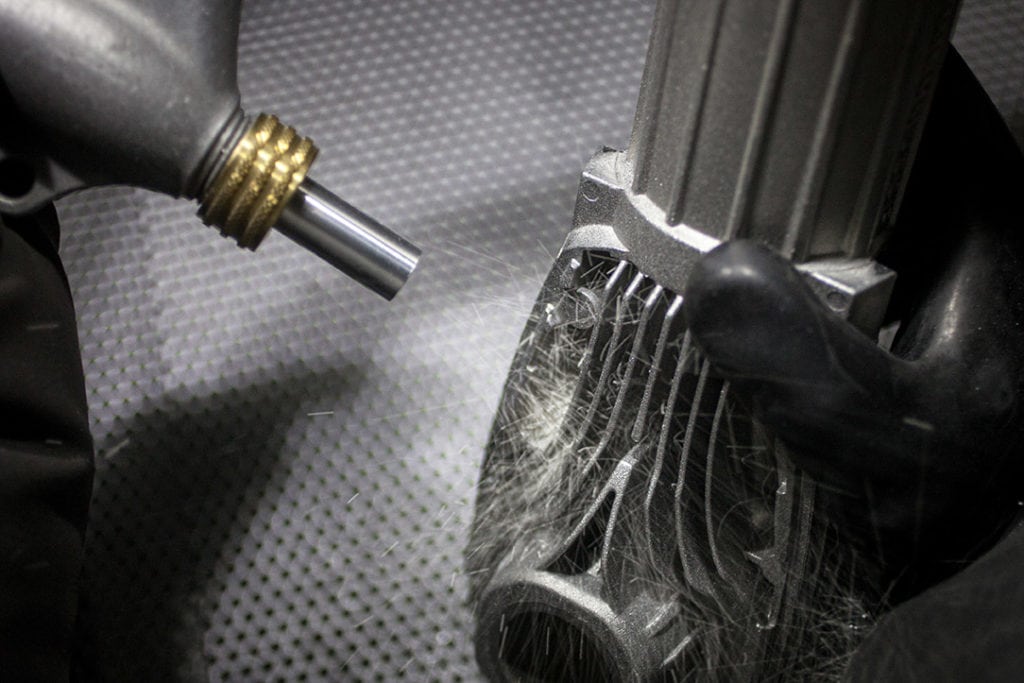What is Peening in Welding?
Last Updated on

Peening is a welding process that helps the weld joints to reduce stress concentration. By peening, the weld joint stretches as it undergoes cooling, relieving it of its internal stress. Peening is applied to fillet welds or weld joints with shallow cracks on the surface as it increases the fatigue resistance. One could argue that peening does not really relieve stress from the joints but instead redistributes it, facilitating beneficial and comprehensive stresses on the external layer.
How Peening Reduces Weld Distortions
Peening aims to balance the stress concentration of the weld puddle during the cooling process. It involves stretching the weld bead over the surface to thin it out, and this action reduces the stress induced by the metal contraction as it cools.
It is a cold work process that deliberately deforms the weld joint using an air hammer. While the process appears to spread the weld bead laterally, it prevents it from expanding. Spreading the weld bead as it cools creates internal stress on the surface layer, which in-turn receives corresponding balance from the parent material’s internal tensile stress.
Peening prevents the weld joints surface from developing cracks that lead to fatigue-resistance failure and stress corrosion.

Types of Peening Practices
Peening has four prime techniques that reduce defects on weld joints.
1. Shot Peening
It involves repetitive bombardment of the weld puddle surface using a small spherical metal object. Each shot leaves a slight indentation on the metal surface. The indentations cause atoms on the surface to crowd and push outwards, trying to regain their original form. As a result, the deep laying atoms are pulled towards the surface, causing resistance on the outward pull.
The internal tensile stress keeps a balance between the compressive surface stress and the new weld. Fatigue starts from the surface. However, cracks do not develop in compressive stress zones, increasing the weld joint’s life.
2. Roto Peening
It follows the same action of compressing the surface area. However, in Roto peening, you will use multiple metal flaps that extend laterally to form a spindle. The spindle-like tool is inserted into a drilling machine that rotates at speeds of 3,000 revolutions per minute (RPM). The peening effect takes place when the flaps get in contact with the weld surface.
The rotational speed of the spindle determines the energy applied to the weld surface.
3. Needle Peening
Needle peening uses a particular descaling gun that has multiple needles with a radial-shaped head. The needles are hardened steel metal.
During peening, the needle’s impact on the weld surface is repeated using a crisscross motion.
4. Hammer Peening
Hammer peening is the most popular option that follows a similar process to needle peening. However, instead of using multiple needles, it uses a ball-shaped hammer. This technique applies to stress relief between welds that are bound for structural fatigue and high stress.
Remember to peen lightly when using the hammer peening technique. Over hammering adds stress or makes the weld brittle by excessive hardening.

Advantages of Peening in Welding
- It creates necessary resistance to:
– Fatigue failure
– Corrosion fatigue
– Hydrogen assisted cracking
– Cavitation erosion
- It also reduces stress corrosion cracking that leads to fretting and galling of the weld puddle. Peening leads to the prevention of porosity.
- See also: How to Build Welding Lead Reels
Where is Shot Peening Applied?
Peening serves many industrial uses, especially where mega metal structures are involved. It reduces and prevents stress, leading to fatigue resistance failure and an eventual collapse of these structures.
The procedure is also vital in aircraft, boat making, rocket, and automobile industries, among other popular uses.

FAQs
What is the best peening technique?
While peening in welding is essential, different techniques apply. The best technique depends on many factors. For instance, there are peening techniques specifically for commercial usage that requires finesse.
What happens if I skip the peening process?
If peening in welding is skipped, the risks are too significant. An eventual collapse of a megastructure is a devastating occurrence that can lead to injury, or worse, the loss of lives.
Final Thoughts: What is Peening in Welding
Peening in welding, is a stress-relieving process that leads to the overall strength of your weld joints. By reducing defects and the possibility of cracks forming on the surface, the metal weld has better chances of avoiding fatigue resistance failure.
Even though welding metal sheets have different outcomes, a professional welder should control the end product by adhering to the metals’ elements to avoid defects. Clamping the metal sheets firmly together when welding minimizes the formation of defects. A compromised weld reduces the static resistance of the welded joints. Over time, it will build fatigue and lose its tensile strength.
Featured Image Credit: Conniejane Flohr, Shutterstock
